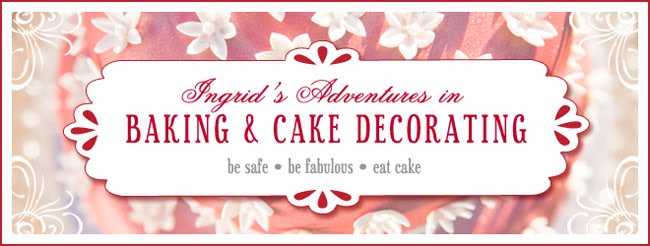
Earlier this week, I set out on cake-safari to hunt down the perfect birthday cupcake. What was the object of my sport? Why, none other than the rare and delicious orange vanilla cream cupcake.
But this sneaky little baked good pulled a fast one on me. Yes, as I was mixing and whisking through the jungle – measuring spoons in hand – these sweet sleuths filled my cupcake traps with a decoy. As I pulled back the paper liners, I noticed I hadn’t caught cupcakes at all. No, these cupcakes were muffins.
MUFFINS!
 How could this be? I used the right bait. My measurements and ingredients were correct. I even saw the batter crawl into the oven trap. So how is it that my cupcakes spontaneously transformed into muffins?
How could this be? I used the right bait. My measurements and ingredients were correct. I even saw the batter crawl into the oven trap. So how is it that my cupcakes spontaneously transformed into muffins?Perhaps it was survival, like lizards dropping their tails, or frogs spontaneously changing sex for population control. These chameleon-baked-goods were a mystery, hiding in plain sight.
Or was the hunter to blame?
Alas, I hear the peanut gallery whispering. “What is the difference between a muffin and a cupcake? Aren’t they the same thing?”
Sure, these two species seem almost identical. After all, they are made from the same exact ingredients. But do you celebrate your birthday with a big birthday muffin? No! And trust me, it's not the frosting that makes the cake.
It's the texture.
Thus, I went on three cupcake hunting safaris last week, in search of perfect cupcake texture. I made three cake-y kills, and I have dissected and documented them below. Soon you too will see what makes a cupcake a cupcake, and a muffin a muffin!

Starting with batch #1 (the muffins) you will notice that muffins innards are rough and crumbly. This is because in muffinland you need not worry about a mixing method. But in cupcakeland, very detailed mixing instructions must be followed. Skip a step at your own peril. Which, is exactly what this little hunter did. I mixed the dry goods in with the wet goods.
This fatal folly caused my batter to clump. Why is this bad? Clumping means the sugar granules don't cut holes into the butter at a consistent rate. Clumping turns perfect tight air bubbles (which make cupcakes) into bulbous and unpredictable puff-pockets (which make muffins). If your batter's lumpy and bumpy – you're hunting muffins. If it's smooth as silk – well hot dog, you're headed for cupcake country.

On Safari number two, I learned that the texture of a cupcake (or cake in general) is smooth and refined. You've got to cream your butter and slowly add in your favorite boxer – the sugar – who will play punching bag with the solid fat. After a few rounds in the bowl, this creates millions of tiny tight air pockets.
Then (skip this step at your peril) you add in the dry goods. Then the wet goods. SEPARATELY!
So, while real estate is about location, location, location - baked goods are about technique, technique, technique!

But I wasn't satisfied with my second cupcake hunt. Sure, I'd caught some cake-y treats, but I found them to be dry. DRY! Curse you, cupcake gods!
Time to retreat? Never!
I put on my safari hat. I referenced my field guides (the Internets), and found a little clue for my final hunt: switch up the bait. I exchanged the solid fats (butter) for liquid fats (oil).
Oh, sweet cupcake, it looks like oil is your Achilles heel. Yes, I had finally caught the illusive and moist, smooth texture of cupcake!
 So, if you want to sift your way to the sweet-cake-savannah, be sure to perfect your technique! I suggest following the Alton Brown creaming method, guaranteed to catch cake every time:
So, if you want to sift your way to the sweet-cake-savannah, be sure to perfect your technique! I suggest following the Alton Brown creaming method, guaranteed to catch cake every time:The Alton Brown Creaming Method:
1) Measure out all ingredients (by weight if possible). Fats should be pliable but solid (no sign of melting). If kitchen temp is over 70 degrees Fahrenheit, chill the bowl.
2) Combine all dried goods (except sugar) in a food processor, or by sifting.
3) In a small bowl beat eggs together, along with any extracts.
4) Using a stand mixer (with the paddle attachment) on medium speed, mix the fats alone for a minute to spread them around.
5) Add sugar (slowly) to the mixture and beat until it lightens noticeably.
6) Reduce speed to “stir” and add eggs very slowly. Stop to scrape down sides as necessary.
7) Work in dry goods in three installments, alternating with any additional liquids, such as milk. Always start with the dry ingredients and finish with the wet for a smoother batter.
8) Stir in any bits and/or pieces (chocolate chips, nuts, etc.)
9) Bake according to the recipe’s instructions.
Yeah, don’t just throw everything into a bowl and stir…unless, of course, you’re hunting muffins.
And if you aren't convinced, then perhaps the best way to know the difference between a muffin and a cupcake is to ... well ... eat them!



This comment has been removed by the author.
ReplyDeleteThis is happy-making and informative! I'm dying to dye my hair and eat cupcakes! Is that your yeard? It's dreamy! Nice safari illustration, too! I remember when you hated computers. How far you've come, my muffin (or should I now call you cupcake?)! All grown up, and on the internets, too!
ReplyDeleteDarn, how do I get my picture to come up?
ReplyDeleteI think you are the cupcake, Martha! :)
ReplyDelete